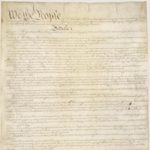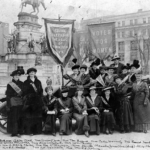This lesson introduces students to the vigorous debates between the Federalist and the Anti-Federalists surrounding the ratification of the Constitution that took place in the state conventions.
In the state ratification conventions, delegates argued the wisdom of adopting the Constitution. Elected specifically to serve in these conventions, they came from a range of backgrounds, from the very elite and highly educated, to those of humbler birth and station. State delegates grappled with questions about the nature of democracy, the distribution of wealth and power in society, the rights of individuals and minority groups, and the role of dissent in a republic.

